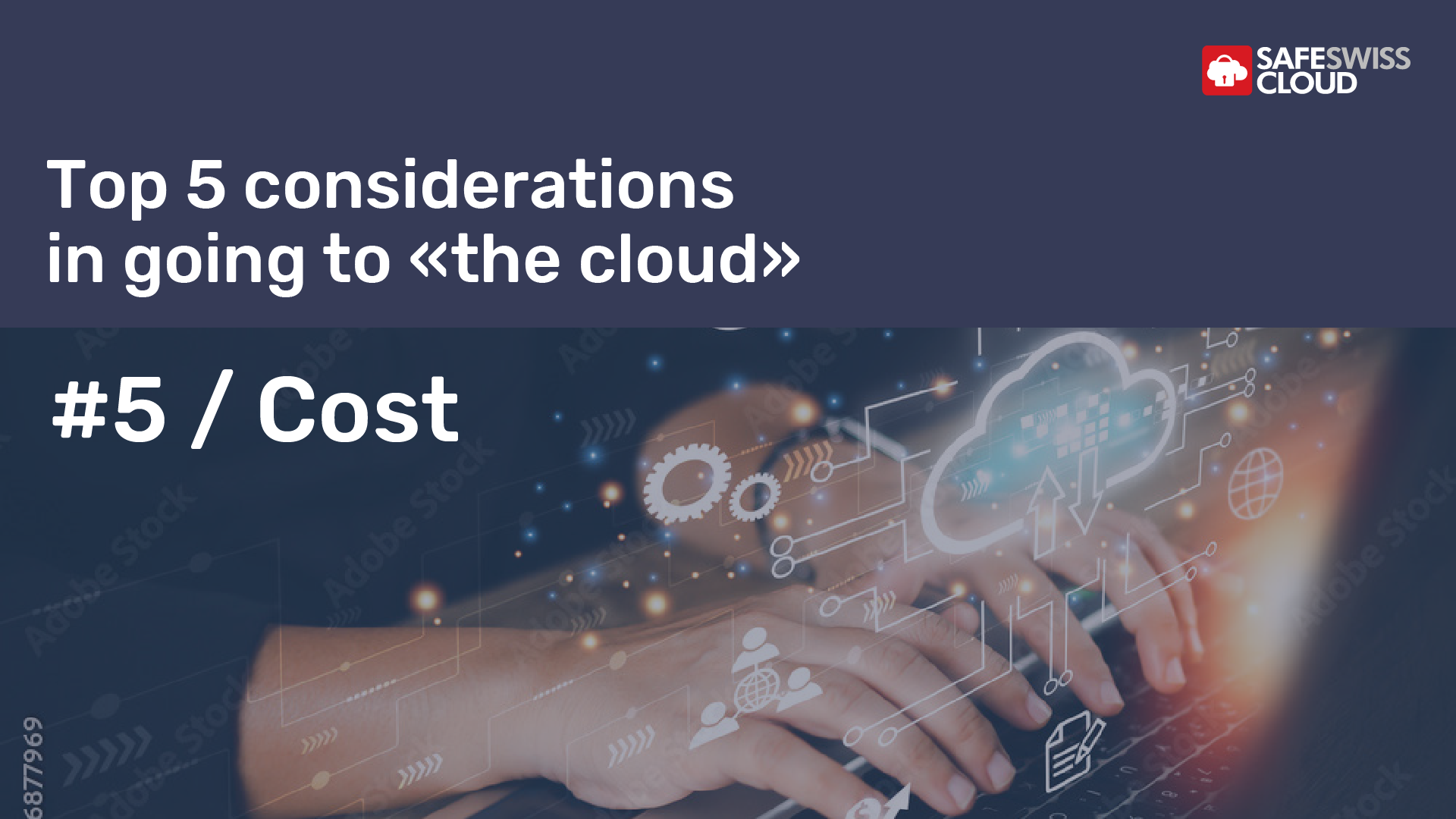How can IT Decision Makers evaluate their Cloud Computing Options? #5 – Cost
The 5 most important considerations in going to “the cloud” explained. The fifth part of our series deals with the topic of Cost.

This is the last part of our five-part series on the topic “How can IT Decision Makers evaluate their Cloud Computing Options?”. See here for other parts:
Finally, cost is always a relevant parameter in the evaluation of cloud solutions. Once the consequences of the above four Cs have been considered, it is important to understand the total cost of ownership (TCO) over a period of around five years.
The TCO should include at least the following components:
- The cost of hardware amortised over 3 to 5 years vs. the cost of leasing or the rent paid for servers in the cloud.
- The cost of in house staff to operate and manage the servers vs. the cost of paying a service provider for this over the calculation period (e.g. 5 years).
- The variable costs of cloud solutions, e.g. related to the number of real and write operations to storage or the number of bytes transferred across networks.
- The cost of setting up the systems and migration.
- The costs of licenses for operating systems, databases and software.
- The cost of keeping the systems secure.
- The costs of backup and disaster recovery.
- The cost of training IT staff.
- In case of a SaaS solution, the costs paid to the SaaS provider for all users along with any in house user management overhead. For a SaaS solution, there will be no costs for the previous points, because this will be the responsibility of the SaaS provider.
- The cost of training users.
Making a proper TCO is essential to understand the true cost of computing, especially cloud computing. Often a simple comparison of hardware costs for an in house solution are compared to the costs of renting servers in the cloud. As the above list demonstrates, it is important to consider all the costs over the amortisation period to get an accurate picture.
In summary, careful consideration of the five Cs outlined in our series, will give you a good framework to evaluate the available options, from an IT decision maker’s point of view.
This is the last part of our five-part series on the topic on the topic “How can IT Decision Makers evaluate their Cloud Computing Options?”. See here for other parts:


Please Note:
You may use one of these HTML tags and attributes: <a href="" title=""> <abbr title=""> <acronym title=""> <b> <blockquote cite=""> <cite> <code> <del datetime=""> <em> <i> <q cite=""> <s> <strike> <strong>